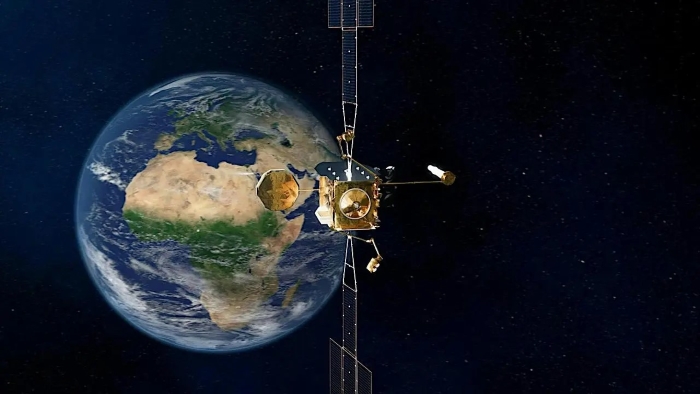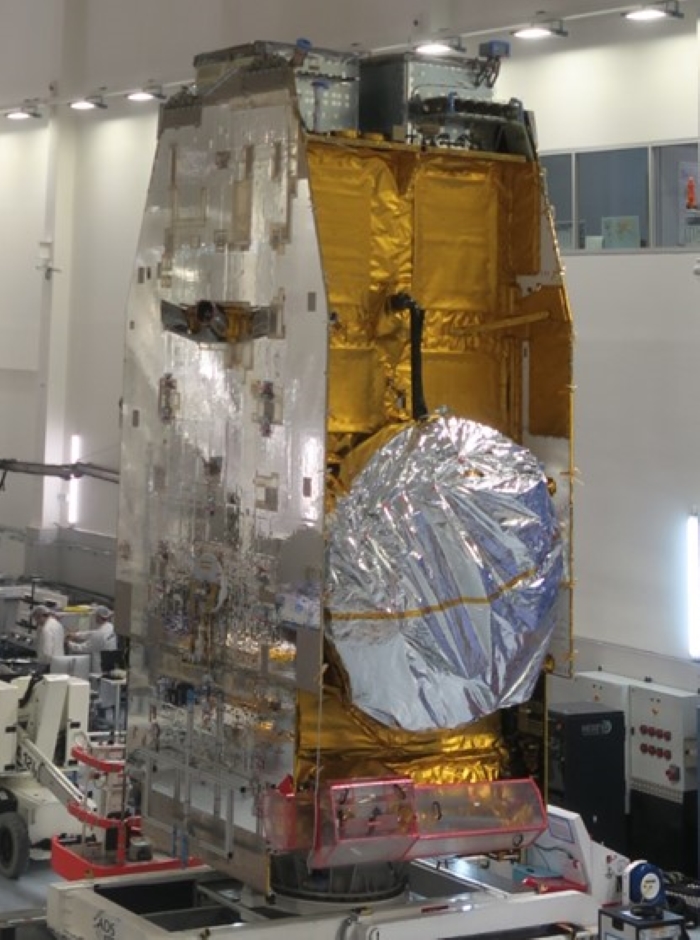SpainSat NG-1 satellite completed after delivery of key Pacis 3 units

As part of ESA’s Pacis 3 project, the X-Band receive active antenna (RX) developed and manufactured by Airbus Defence and Space Spain, and Airbus CRISA distributed electronic units (which manage spacecraft energy sources while protecting power distribution) have successfully completed their full acceptance testing.
Pacis 3 is an ESA Partnership Project between the ESA and SpainSat NG1 satellite owner and operator Hisdesat, with support from the Spanish Space Agency. The SpainSat NG-1 satellite is being developed to offer secure communications for governmental users across Europe. It boasts cutting-edge telecommunications technology, including highly advanced X-band Direct Radiating Array (DRA) antennas for both transmitting and receiving, as well as a pallet of six individually steerable antennas that operate at higher Ka frequency band. These antennas have all been developed through the Pacis 3 project.
The DRA RX extensive testing included radiated radio frequency testing, which took place in Madrid before moving to Toulouse. This was in addition to environmental testing (thermal vacuum and mechanical vibration), which confirmed the good health and performance of the innovative hardware.
The DRA RX enables the receipt of uplink traffic at X Band frequencies via variable coverage footprints, these are shaped by the 120 elements comprising the phased array. The antenna coverages are reconfigurable in orbit, which allows the operator to adapt to data-demanding scenarios and change business priorities. In addition, the DRA RX offers geo-localisation, interference mitigation and beam-hopping functionality.

Installed on the spacecraft, the DRA RX will now follow a period of tests in its final flight configuration, including the interfaces with the antenna control electronics, and geolocation equipment (GEOSCAU - Geolocation Signal Conditioning and Acquisition Unit). Both units being developed by Airbus CRISA.
Upon finishing the final electrical tests, the SpainSat NG-1 spacecraft will be delivered by the end of 2024 for transport to its launch site in Florida, United States.
“As we become closer to the launchpad for SpainSat NG-1, each test completion showcases the world-leading expertise ESA Member States have, demonstrating the innovative spirit and technological leadership in industry, governments and institutions,” said Oscar Del Rio Herrero, ESA’s Pacis 3 Project Manager.
"As the owner and operator of SpainSat NG-1 and NG-2, Hisdesat is very pleased with the delivery of the Pacis 3 elements and eagerly anticipates launching the satellite and commencing operations," said Basilio Garrido, Hisdesat Project Manager for SpainSat.
ESA’s Partnership Projects programme, which forms part of ESA’s Connectivity and Secure Communications directorate’s Advanced Research in Telecommunications Systems (ARTES) programme, works to bring its Member States’ expertise and innovative technologies to the global market, developing, de-risking and empowering its industry to build world-leading space solutions.


